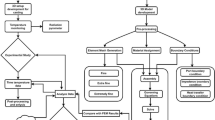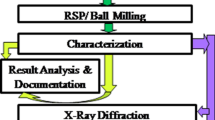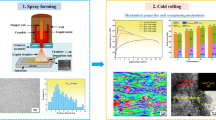Abstract
We show that microadditions of yttrium significantly change the fine structure and properties of copper obtained by vacuum melting. In addition to the phases inherent in copper, there appear phases up to 20 nm in size, the number of precipitations of which increases with increase in the yttrium content. The solidus temperature of copper containing more than 0.04% of yttrium is equal to (860 ± 5)°C. For copper containing 0.03, 0.02, 0.01, and 0.005% of yttrium, the temperature is equal to 920, 1000, 1040, and 1057°C, respectively. The comparative analysis of the temperature dependence of the mechanical characteristics of strips of cathodic copper, vacuum inductive copper, vacuum electron-beam copper, and copper microalloyed with yttrium containing 0.01–0.03% of yttrium shows that, in the temperature range 20–600°C, copper microalloyed with yttrium has the best characteristics. Alloying of copper in the process of vacuum remelting with small additions of yttrium (0.01–0.02%) leads to both stabilization of copper and an increase in its conductivity as compared with the unalloyed copper obtained by vacuum melting.
Similar content being viewed by others
REFERENCES
E. M. Savitskii, V. S. Terekhova, and I. V. Burov, Alloys of Rare-Earth Metals [in Russian], Nauka, Moscow (1962).
B. I. Kogan, Scandium [in Russian], Academy of Sciences of the USSR, Moscow (1965).
G. V. Samsonov, Refractory Compounds of Rare-Earth Metals with Nonmetals [in Russian], Metallurgiya, Moscow (1964).
V. F. Terekhova and E. M. Savitskii, Yttrium [in Russian], Nauka, Moscow (1967).
V. N. Fedorov and A. A. Zhurba, “Influence of yttrium on properties of copper,” Metally, No. 1, 166–169 (1975).
V. M. Beilin, A. V. Lovchikov, V. N. Fedorov, and M. I. Tsipin, “On the possibility of improvement of the properties of conducting copper by alloying with rare-earth metals,” Tsvet. Met., No. 2, 80–82 (1981).
M. E. Drits, “Structure, properties, and fields of application of copper alloys with rare elements,” in: Problems of Physical Metallurgy of Nonferrous Metals [in Russian], Nauka, Moscow (1978), pp. 120–127.
F. H. Spedding and A. H. Daane, The Rare Earths, Wiley, New York (1959).
R. Domagala, J. Raush, and D. Levinson, The System Y-Fe, Y-Ni, Y-Cu, Trans. ASM (1961).
S. V. Shevchenko, Investigation of the Influence of Microadditions of Chemically Active Elements and Development of Copper with Given Properties [in Russian], No. 0194V025160, Ukrainian Institute of Documentation, Kharkov (1996).
K. V. Gagen-Torn, Influence of Admixtures on Properties of Unalloyed Copper [in Russian], Tsvetmetinformatsiya, Moscow (1979).
V. S. Shevchenko, “Investigation of 'hydrogen brittleness' and vacuum tightness of copper materials,” Nauchn. Ved. BelGU, No. 1 (6), 156–160 (1998).
Author information
Authors and Affiliations
Rights and permissions
About this article
Cite this article
Shevchenko, S.V., Neklyudov, I.M., Lopata, A.T. et al. Influence of Microadditions of Yttrium on the Structure, Mechanical Properties, and Conductivity of Copper. Materials Science 36, 901–909 (2000). https://doi.org/10.1023/A:1011399107951
Issue Date:
DOI: https://doi.org/10.1023/A:1011399107951




